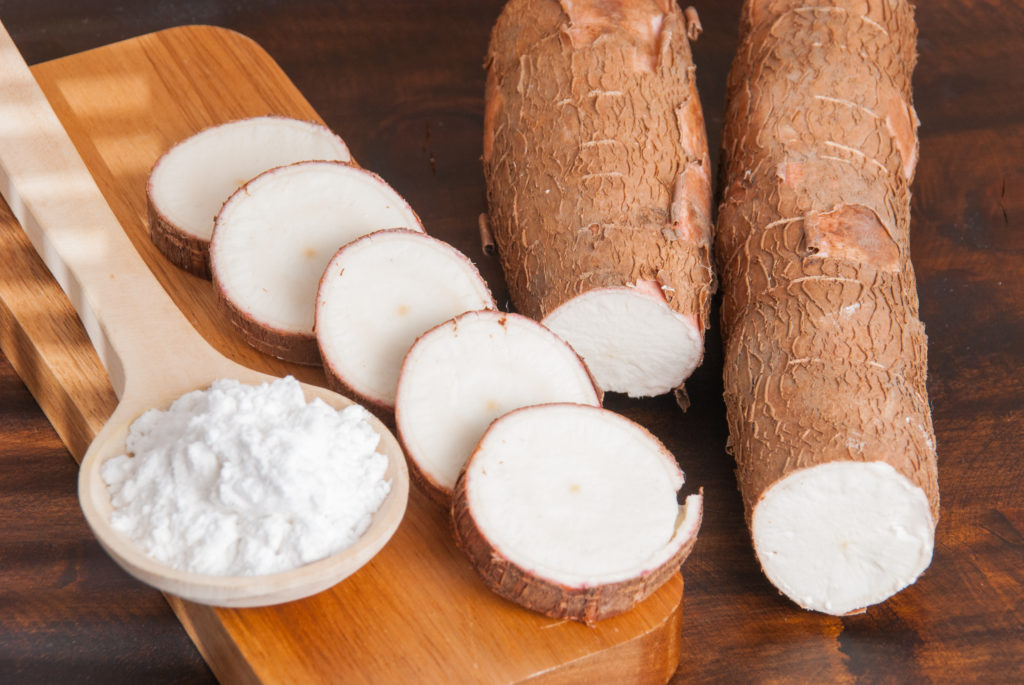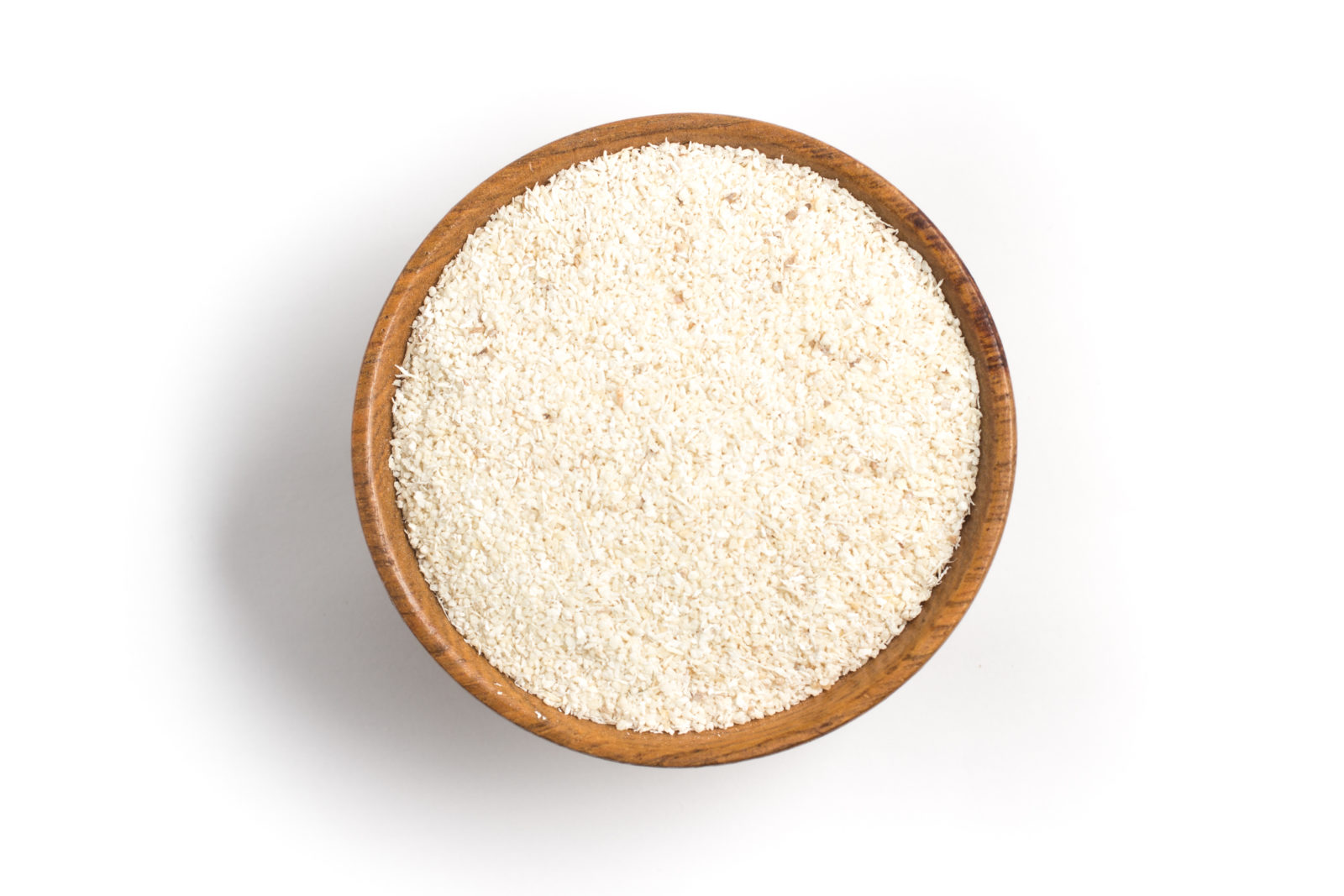Cassava flour may just be the best gluten-free flour out there. Cassava a tuberous plant, native to South America, has been used for thousands of years as a staple food source and today is being researched as a food security crop due to its resilience to climate change, high yield and low cost of production (Maziya-Dixon, B., et al., 2017). Today cassava is one of the most cultivated and consumed plants, and has great social and cultural value for South America, Asia and Africa (Mombo, S., et al., 2017).
Cassava Flour an Allergy-Friendly Alternative for Baking
Being derived from a tuber, cassava flour is naturally gluten, grain and nut-free making it a very suitable substitution for wheat and other alternative flours. In any recipe that requires wheat flour, cassava can be used at a ratio of 1:1, making baking and cooking gluten-free meals incredibly easy.
Because cassava flour has such a high percentage of carbohydrates and a small amount of fiber, insulin levels for certain individuals can spike. Combing cassava flour with flax, coconut or almond flour when baking increases the fiber count and will not spike insulin as much. Consuming fiber-rich vegetables with cassava root or flour is another great way to offset the spike.
As with any root vegetables, as it grows in the soil it absorbs nutrients and pollutants within its vicinity, therefore it is important to choose organic cassava flour whenever possible (Mombo, S., et al., 2017).
How Tapioca Flour is Made
Tapioca flour or starch is made from the starch remnants of cassava root, which is obtained after the washing and pulsing process. The moist pulp is pressed, removing the remnants of water and with it the starch. The extracted liquid is evaporated leaving behind a starchy residue – tapioca.
Tapioca is a perfect replacement for cornstarch and can be used in a 1:1 ratio in recipes that require cornstarch as a thickener. Cassava flour can also be used in this instant for thickening soups and sauces.

Nutrients in Cassava Flour
Cassava is very rich in carbohydrates, about 1 cup of cassava flour (285 g) contains about 110 g of carbohydrates, 5 grams being fiber and about 4.5 being sugar. Cassava flour is also exceptionally rich in vitamin C, one cup contains just about the recommended daily value for it.
Cassava flour contains resistant starches ranging from .19-2.21% – with similar properties to that of soluble fiber. Resistant starches positively benefit the health of the digestive tract, feed good bacteria, reduce inflammation and bloating as well as promote good digestion.
The traditional fermentation of cassava mash, before it being made into cassava flour aids in increasing nutrient bioavailability as well as increasing protein content, magnesium and iron (Oboh, G., et al., 2003).
Cassava Flour is not Harmful
Cassava is only harmful when it has not been properly processed or consumed raw. Raw cassava contains potentially toxic cyanogenic glycosides which can turn into cyanide within the body when the tuber is not properly prepared. By soaking cassava in water (hot or cold) for an hour, sun-drying, fermenting or grating, roasting and then turning cassava into a flour eliminated any concern of cassava and cassava flour being toxic (Nzwab, H., et al., 2011) (eds. Sharma, H.K., et al., 2016).
Rest assured cassava and tapioca flour purchased from your local health food store will not contain any harmful levels of cyanide. There are many other plants that naturally contain a small amount of cyanide at levels that are not harmful, this includes, almonds, the kernels or seeds of apples, apricots, and peaches.
References
Maziya-Dixon, B., Alamu, E.O., Popoola, I.O., Yomeni, M. (2017). Nutritional and Sensory properties: Snack Food Made from High-Quality Cassava Flour and Legume Blend. Food Science and Nutrition. Volume 5, Issue 3, pages 805-811.
Mombo, S., Dumat, C., Shahid, M., Schrech, E. (2017). A Socio-scientific analysis of the environmental and health benefits as well as potential risks cassava production and consumption. Environmental Science and Pollution Research. Volume 24, Issue 6, pages 5207-5221.
Nzwab, H., Cliff, J. (2011). Konzo: from Poverty, Cassava and Cyanogen intake to Toxico-Nutritional Neurological Disease. PLos Neglected Tropical Diseases. Volume 5, Issue 6.
Oboh, G., Akindahunsi, A.A. (2003). Biochemical changes in cassava products (flower & gari) subject to Saccharomyces cerevisiae solid media fermentation. Food Chemistry. Volume 62, Issue 4, pages 599-602.
eds. Sharma, H.K., Njintang, N.Y., Singhal, R.S., Kausnal, P. (2016). Tropical Roots and Tubers. Production, Processing, and Technology. John Wiley and Sons Ltd, West Sussex, UK.
Amanda Filipowicz is a certified nutritional practitioner (CNP) with a bachelor in environmental studies (BES) from York University. She also has certification in clinical detoxification, prenatal and postnatal care as well as nutrition for mental health. She has been working as a nutritionist since 2013 and is a lifelong proponent of eating healthy.

